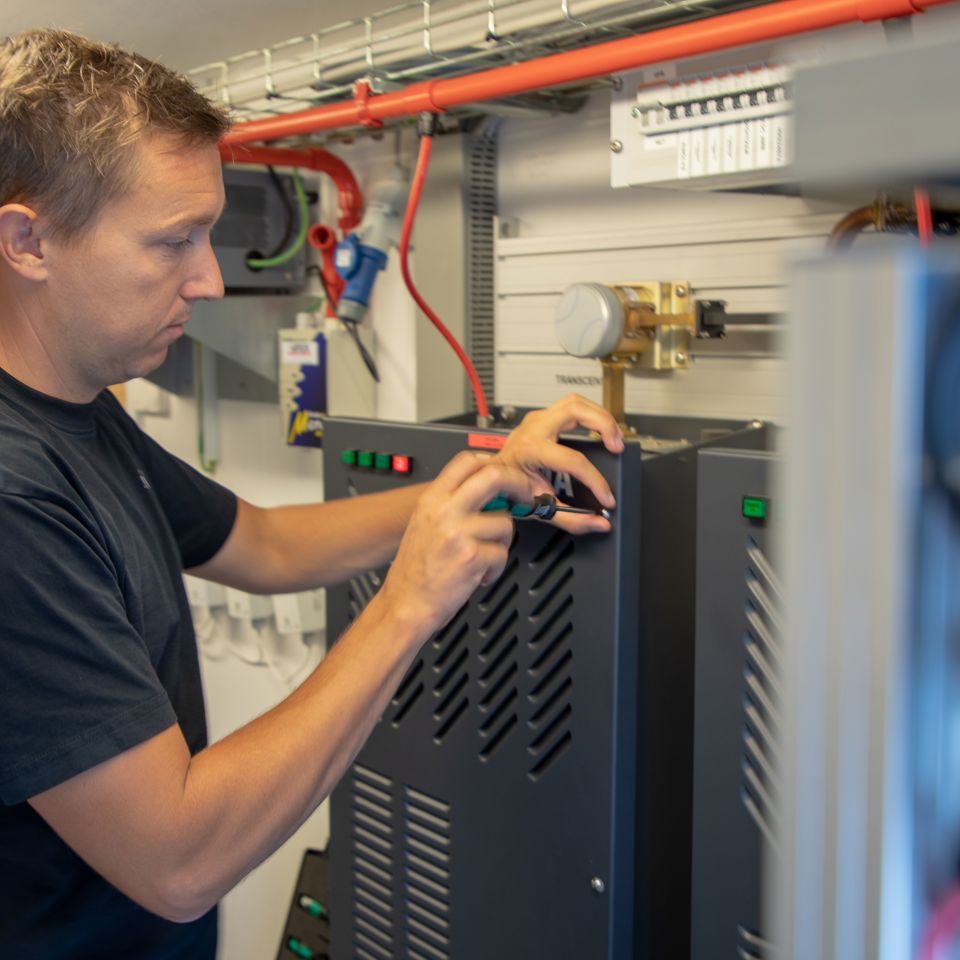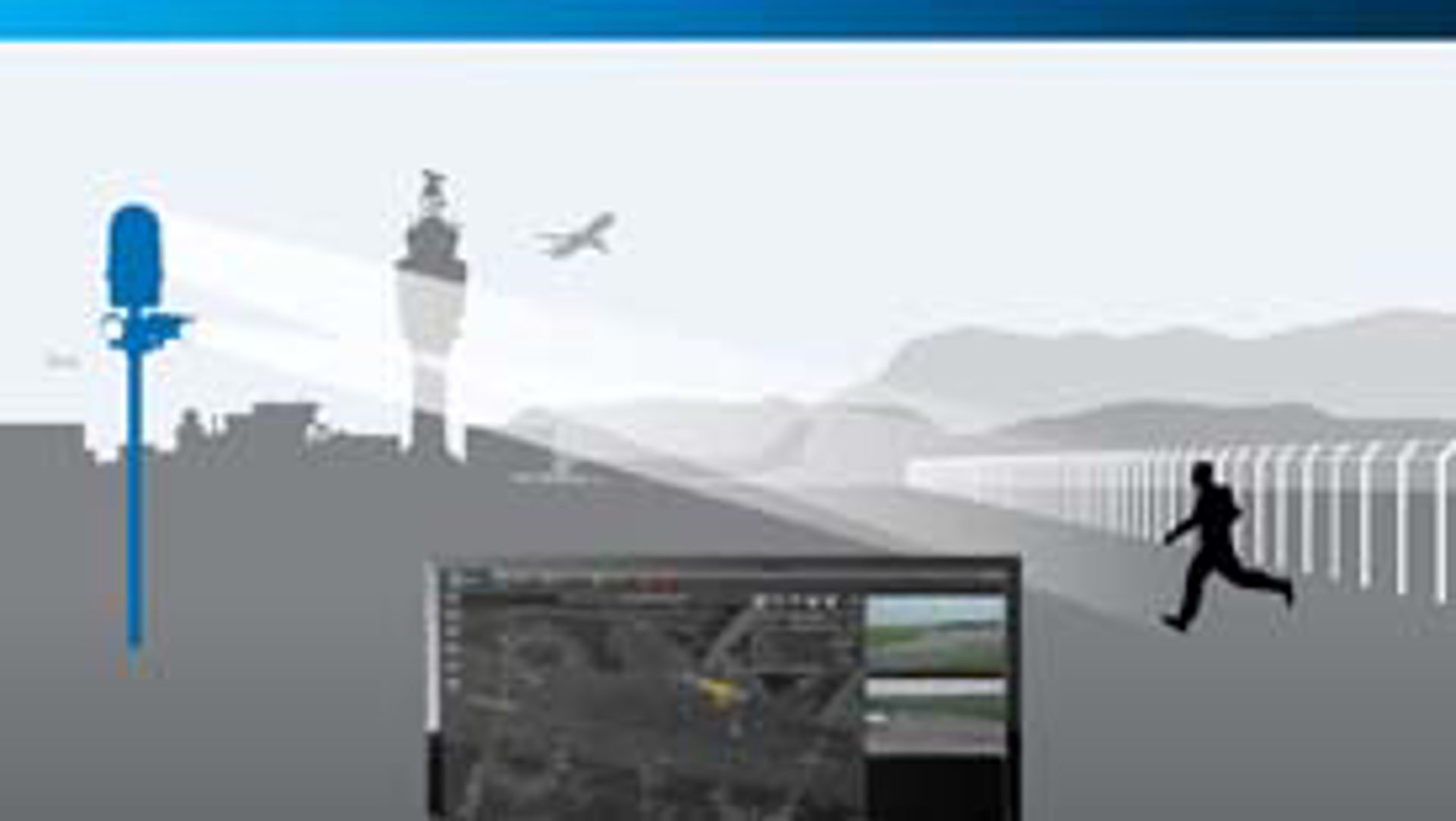Protect your airport perimeter
Over 140 major airports worldwide rely on our SCANTER surface movement radar technology for mission critical situational awareness. The SCANTER 1002 ground surveillance radar is an affordable, best-in-class, all-weather detection to customers aspiring to the highest levels of perimeter and wide area protection.
Outside and inside the perimeter
Whilst commercial airports across the globe have steadily improved their security measures (not least in the terminal buildings and baggage handling areas) the perimeter line is now often the weakest link and easiest point of unauthorized access into airside. This can also be said of several military airports, which have been attacked, demonstrating the level of deadly determination that darkens the threat and risk picture.
Controlling a perimeter line that sometimes stretches tens of kilometers can be a daunting task. In the U.S. alone, there are over 1,000 human airport perimeter breaches every year. Any breach of the perimeter, be it by humans or animals, have an immediate impact on airport operations. Most breaches are considered minor but with airport attacks in Paris, Brussels, and Istanbul there is now an increased pressure on airport security professionals to find new and improved solutions to strengthen not only the perimeter line but also to ensure a full understanding of the areas both inside and outside the same line.
Deploying the right countermeasure
Our T.react CIP and SCANTER technologies will provide the airport security team with more time to react by fully controlling far and near areas rather than a thin boundary line. T.react CIP´s ability to provide an understanding of any incoming threat in a split second also allows for the correct countermeasures to be deployed rapidly. This not only reduces the risks of catastrophic impact but cuts operational costs, as smaller incidents can be scaled back at deployment level.
A T.react CIP system implementation can therefore have a return on investment that is measured in a few years only.
The most advanced intelligent wide area detection system
The T.react CIP solution consists of 3 key elements working together to provide a Single Picture of Activity inside the area of responsibility.
- SCANTER 1002 ground surveillance radars
- T.react CIP Command and Control system
- A suit of tailored cameras, geo-sensors and effectors to suit each and every unique project
Radar surveillance benefits

Increased reaction time

Easy to operate

Easy to install
Command and control (C2) system
It is important to remember that radar is not an intelligent device. Neither is a camera or a fence line detector. Having deployed a SCANTER radar system it becomes critical that the relevant unwanted behavior is filtered out from the normal daily activities and presented to those responsible in the simplest way possible.
Once the radar system design is completed, it is therefore time to select a command and control system that can do all the necessary calculations automatically, handle near unlimited numbers of cameras and sensors and then present only the relevant information to the user in a way that error and confusion is avoided in order to aid the fastest possible reaction. Filtering action from distraction - ensuring that every second counts.
T.react CIP command and control system
Simplicity is a key word for T.react CIP, allowing composed control of both small but also large sites, regardless of sensor complexity and the amount of moving objects.
Proven technology
We have developed and deployed more than 150 mission critical C2 systems (T-core) worldwide in the past 30 years. This includes systems for ballistic missile defenses, where every 1/10 of a second counts. Understanding what it really takes to protect lives and property during that one, short critical moment has allowed Terma to move in the opposite direction of the traditional commercial VMS/COP/PSIM systems when developing T.react CIP.
The weakest link
The first acceptance of how to implement a true perimeter security solution lies with the acknowledgement that at 4 am, on a rainy, dark morning - all responsibility of protecting the area lies with the person tasked with maintaining control over the area of responsibility. Be it patrolling, scanning the perimeter with night goggles or behind an array of screens in a control room, this task is only as good as its weakest link.
And that link is human.
When multiple, simultaneous, potentially catastrophic events trigger the systems, the last thing the operator wants is complexity.
Efficient decision making
Yesterday’s traditional VMS/COP/PSIM systems normally fail for three simple reasons when things get hot:
- a lack of simplicity
- a lack of true one-to-one sensor control to fully automate the initial system response
- the lack of a powerful rule engine to truly filter action from distraction
Complex interfaces lead to systems being ignored or overlooked. Semi-manual control takes focus away from the response and the rate of nuisance, and false alarms eat away at both confidence and vigilance.
With several hundreds of thousands development hours providing the base of Terma’s T-core platform, the recent years of R&D have therefore been spent on perfecting a new, unique human interface, allowing both commercial and military users the same ease of operation.
In addition to simplicity, T.react CIP’s 4-dimensional sensor controls free up the operator to focus solely on the response whilst the systems massive, unique rule engine works silently in the background to ensure that real alarms are filtered out and prioritized in a way not seen before.
In T.react CIP, the relevant track and video data of any moving threat is instantly and automatically presented to the operator as a single coherent activity within the area of responsibility. This allows for an immediate understanding - and if needed - one-touch, fingertip control of any situation, however stressful it may be.
Supporting simplicity at operator level, razor-precision at responder level, and having the ability to overlap with other safety functions at an airport also enables the organization a return on the investment that will start from the first day of T.react CIP implementation.
You need to accept all cookies in order to see the content
Open Cookie Control PanelRadar functionality
To provide maximum security in adverse weather conditions it is important to look at a radars ability to detect, track, target separate and its ability to follow both slow and fast moving targets at both short and long distances.
At Terma, we have chosen to use the Ku band for the SCANTER 1002 for a number of vital reasons. Firstly, it is the optimal compromise to obtain both precipitation penetration and Doppler sensitivity on slow moving objects. That is why the Ku band is the preferred frequency band on most military ground surveillance radars.
Secondly, by using the Ku bands to combine precision and high scan speed it is possible to integrate the radar into a fully automatic command and control system, such as Terma´s T.react CIP (see below). The first criteria for this to happen is that the radar is able, not only to detect, but also to separate 100s of small, slow, and fast moving targets from each other – at the same time. The very fine range resolution of the SCANTER 1002 improves target separation even without the radar’s Doppler discrimination. This is where lower band compact radars start having problems, such as the X band.
As a compact Ku band radar can focus more energy onto targets than e.g. a compact X band radar would, it allows the system the precision it needs to present the operator with extreme levels of automated camera control and smoothness in the automated camera tracking. For the operator, smooth tracking of an object or person is essential not only to gain vital, updated information about the threat as it moves but equally so to avoid getting tired of jittery video images.
As with all things ruled by the laws of physics, great consideration also has to be taken to the radars' ability to detect the same objects when the sun is not shining. The attenuation of the radar signal in various states of rain is nearly exponential with the frequency used. This means that the higher the frequency, the more loss of power through a medium (attenuation), the poorer its ability to penetrate droplets of water and humidity. As X and Ku band radars operate in the lower frequencies, adverse weather has a minimal effect on performance unlike Ka and W band radars.
A 12 dB loss per km between the Ku and X band in heavy rain is however not favored if the radar is to be positioned in areas where rain is expected. Sand and dust affect neither X nor Ku band much as the particles are too small.
With the need for both precision and weather penetration, at Terma, we have chosen to present the new SCANTER 1002 as a Ku band radar.
Our patented signal processing has made Terma´s SCANTER radars the world benchmark in all its market segments. The famous EC2 tracker from its larger SCANTER siblings is built into the SCANTER 1002 allowing for a state of the art processing normally used only in tactical radars.

Automated processing

Frequency band

An intelligent wide area detection solution
T.react CIP is the most advanced intelligent wide area protection solution to date. It is a system that provides maximum levels of security, situational awareness, and control over your external environment - regardless of size. A solution designed to give you a good chance of preventing a disaster from happening in the first place.
How to implement a T.react CIP solution at your airport
Our security experts and engineers have decades of experience working holistically with airport perimeter security around the globe. The deployment of any security solution is always preceded by careful planning and understanding of the customers' unique operations and demands in conjunction with those set out by international and national aviation authorities.
We will also undertake to survey any airport perimeter to establish the best-practice-deployment of radars, other geo-sensors, cameras and infrastructure (including power and network).
To fit into any customer driven project model, we have chosen to be both sensor neutral in its system approach and flexible in the way projects can be executed. This allows the customer to freely source core components from others than Terma and also chose the level of involvement that Terma should have, be it as a sole service provider or as a subcontractor.
Last but not least, our experts can also help with establishing the rate of return on the investment by evaluating current safety and security expenditure based around the current process of controlling the perimeter area.
Contact us
If you have any questions about our Airport Wide Area Protection solution, please send us a message.
Need more details?
Then download our solution materials

Operational availability
Want to learn more?
If you have any questions about protection of critical infrastructure, please get in touch with our expert.








